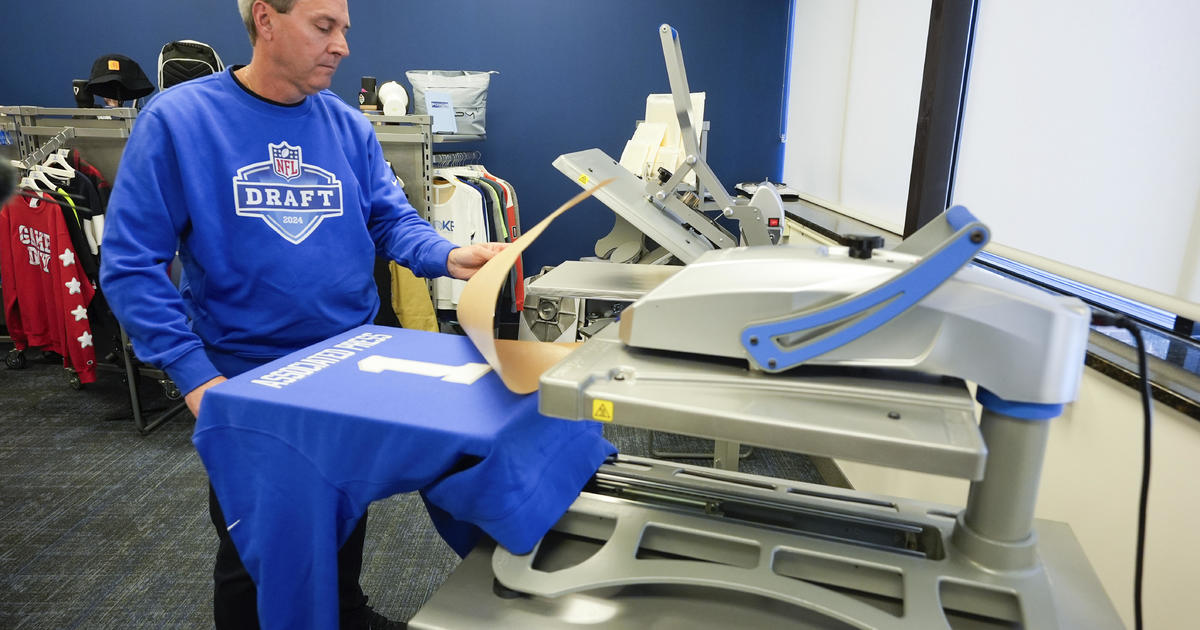AlixPartners Study: Post-Crisis Auto Industry Faces New Challenges
After surviving a period of unprecedented restructuring and global financial tremors, the automotive industry now finds itself facing a whole new set of competitive challenges and decisions -- ranging from keeping costs and capacity under control with the slow, "post-bubble" sales recovery in the United States, to placing the right bets on vehicle-propulsion and other technology systems, to focusing on the right emerging markets.
That's according to a comprehensive annual automotive industry review released Wednesday by AlixPartners, the global business-advisory firm.
The AlixPartners 2011 Automotive Outlook finds that while automakers and suppliers have seen profits bounce back handsomely -- North American original equipment manufacturers posted $12.5 billion in 2010 profit on a net margin of 4.6 percent and North American suppliers reaped $8.2 billion on a net margin of 4.3 percent -- no one should be tempted into thinking that things are now back to "normal," or at least the normal defined by the consumer-incentive-induced sales levels of the past.
In sync with its past annual auto studies, AlixPartners continues to predict that U.S. auto sales will climb more slowly, and to a lower peak, than many others are predicting. Specifically, the firm estimates U.S. auto sales will reach just 12.7 million units this year and only 13.6 million in 2012.
Hand in hand with that prognosis, and with the lingering U.S. "employment recession" showing scant signs of abating, AlixPartners estimates that unemployment and underemployment could cost the auto industry up to 1.5 million in lost vehicle sales this year.
Another market headwind is the stagnant U.S. housing market. According to the study, historically, approximately one of every five vehicles sold is financed by home-value appreciation, a ratio that's likely to decrease with the continuing stagnation in home values.
Meanwhile, according to an AlixPartners survey of 1,000 Americans regarding their views of the U.S. economy and their personal economic situations, 83 percent said they had delayed or planned to wait at least a year to buy a vehicle.
"It's a cliché, but the auto industry really does face a 'brave new world,' and the differentiators for winning in the world we are transitioning to will be significantly different from the past," said John Hoffecker, managing director at AlixPartners and co-lead of the firm's Enterprise Improvement Practice. "The good news is that most of the U.S. players now have their costs in line to capitalize on a slow, steady sales recovery. On the other hand, the industry is facing some truly momentous, and momentously expensive, decisions on everything from powertrain choices to emerging markets; and for OEMs to count on a U.S. sales bubble like in the last cycle -- artificially induced to begin with -- to help fund all that is wishful thinking at best."
According to the study, one of the striking features of the new automotive industry is the convergence among competitors around the globe in areas including cost, quality, production processes, supply chain, management expertise and, last but not least, profitability.
Profitability parity is evidenced by the fact that last year earnings-before-income-taxes margins for automakers globally clustered in a tight band ranging from 4.3 to 5.7 percent -- with OEMs in China and India at 5.2 percent, while suppliers from China and India enjoyed an EBIT margin of 7.5 percent, the highest in the world.
This competitive convergence, the study says, will require big leaps forward in differentiators such as consumer-focused innovation, product-development excellence, truly strategic partnerships at various places around the globe, careful brand-building and, perhaps above all else, a general focus on speed -- in achieving either first-mover advantage or fast-follower leverage. At the same time, says AlixPartners, the future could bring a battle for control of the entire automotive value chain, as new propulsion systems related to the "electrification of the vehicle" may provide an opening for automotive suppliers with innovative battery technologies, or even players such as electric utilities, to take over the pole position from OEMs in that chain.
"Technologically, the auto industry could well be on the cusp of its biggest set of changes since the invention of the internal-combustion engine more than 100 years ago," said Hoffecker. "This will put unprecedented pressure on all players to pick the right business models, the right legal and capital structures, and the right partners. And, this all comes at a time of potential margin erosion as the industry, in general, shifts to smaller vehicles, both for regulatory and consumer-preference reasons. Preventing that erosion will be key."
The AlixPartners study predicts a 13 percent compound annual growth rate for small cars and a 7 percent rate for small crossover vehicles between now and 2015 in the U.S., as large cars, SUVs and pickups are expected to see a CAGR of just 2 percent, respectively, in that time. The study also finds that pickup-truck sales will be hurt by the continuing housing crisis. U.S. pickup sales for 2011 are estimated to reach only 1.7 million units, well below the recent peak of 2.9 million in 2006.
"House appreciation historically has been used to finance the purchase of a new vehicle about 20 percent of the time," said Mark Wakefield, a director in AlixPartners' Global Automotive Practice. "But today, both the 'wealth effect' and the real wealth from owning a home just isn't what it used to be. By the same token, pickup truck sales, which historically have been at the leading edge of U.S. economic recoveries, continue to be hurt by the depressed state of housing starts."
The study also finds that the bulk of future sales growth globally has likely permanently switched to emerging markets. AlixPartners finds that the global vehicle market is on track to be 76.4 million units in 2011, 10 percent above its pre-crisis level, and sees that number at 96 million units in 2015 -- signifying, among other things, that autos is a true growth industry.
However, buttressed by the recent leveling-off of sales in China, the study states that growth will not be the same in every emerging market and will be "bumpy" in most, and cautions that companies and investors in those new markets may find themselves wrestling far sooner than expected with market cyclicality and other issues that Western automakers and suppliers routinely face.
"One thing is for certain," said Hoffecker. "Emerging nations have gone from being just sources of cheap parts and labor to being bona fide markets, not to mention bona fide competitors. What's not so certain is which markets in particular will really take root and blossom, and which will have a false spring and then fade away. Right now, there's a lot of attention on Russia, but, then again, India also used to be in that position. As always, 'caveat emptor' should always be the guiding principle for players in new markets."
Other key findings of the AlixPartners 2011 Automotive Outlook include:
* Raw Materials Still Pricey. In part due to the continuing weak U.S. dollar, rising costs for raw materials and energy (in particular from foreign sources) will continue to pressure manufacturers and could compress margins. Besides petroleum-based products, some of the materials under pressure include copper, steel, lead, and platinum.
* Still Plenty of Capacity. Though some parts of the supply chain, like electronics, are in tight supply today, the study finds that the industry still has plenty of capacity to support slow, steady growth. It finds, for instance, that of the 90 U.S. suppliers that filed for bankruptcy in the last decade, only in those cases where the company moved into some degree of liquidation is it certain that permanent capacity reduction resulted.
* Best Bets for M&A: Key Technologies and Growth Markets. Regarding the outlook for M&A in the auto industry, the study finds that while the industry is currently seeing high valuations, there may still be investment opportunities – for both private-equity and strategic buyers – in select segments and markets. Two such areas include key technologies, such as those tied to vehicle-propulsion systems, and growth markets, from emerging markets overseas to some niche-vehicle markets in the U.S.
"For those with a clear investment strategy and the right criteria, there may well be many opportunities to be found despite today's high valuations," said Christian Cook, a director in AlixPartners' Global Automotive Practice. "And that certainly includes private-equity investors, who remain a significant part of the automotive industry with more than 50 firms holding over 75 companies in North America alone. But, in any deal, proper due diligence and strategic fit will be critical for success."
Additionally, the AlixPartners study suggests a comprehensive strategic and operational package to achieve success in the new post-crisis automotive reality, including:
* Suppliers and manufacturers must rethink their manufacturing, engineering and purchasing footprints, as sales potentials continue to shift into emerging countries.
* Growth can be found in several other key areas, including: improving internal-combustion engines; moving premium features into mass production; and adding electronic controls to models.
* Partnering with other companies should be considered, to fill gaps in capacity, competency, technology, regional presence and customer access -- but such partnering must be done while keeping issues such as "cultural fit" and long-term commitment top-of-mind.
* Companies should be "very slow to pull out the checkbook" when it comes to increasing overhead costs -- which, the study finds, are already back to pre-recession levels for North American suppliers, with cost growth even surpassing sales growth in the first quarter of 2011.
* Companies should leverage insights into long-term demographic and sociographic trends – including the probable driving habits of Baby Boomers as they retire and the priorities of Gen Y when it comes to their passions for such as things as video games vs. their feelings toward cars.
"Peter Drucker once famously wrote the auto industry is the 'industry of industries,' though for a few years there, it looked as if that was far from true," said Hoffecker. "Today, the industry has the opportunity to regain that mantle again, but in an all-new form. The companies that rise to this occasion, and do what it takes to distinguish themselves and their industry in this new era, may well have books written about them in the future as well."
The AlixPartners 2011 Automotive Outlook is based on a benchmark analysis of 226 suppliers, 44 automakers and 21 heavy-truck OEMs. Public economic data and forecasts were also used in the study.
AlixPartners LLP is a global business-advisory firm offering comprehensive services to improve corporate performance, execute corporate turnarounds, and provide litigation consulting and forensic accounting services. The firm has more than 900 professionals in 15 offices across North America, Europe and Asia. The firm can be found on the Web at www.alixpartners.com.



